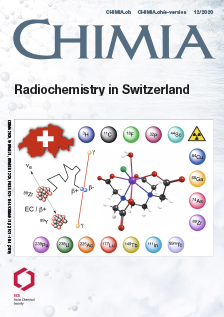Radionuclides in the Environment in Switzerland: A Retrospective Study of Transfer from Soil to the Human Body
DOI:
https://doi.org/10.2533/chimia.2020.984PMID:
33357292Keywords:
Environment, Human body, Radiation dose, Radionuclides, Transfer factorsAbstract
Natural radionuclides are ubiquitous in the environment. In addition, artificial radionuclides are present in the Swiss environment after the fallout of the nuclear bomb tests of the 1950s and 1960s, after the accident of the Chernobyl nuclear power plant, or after authorized discharges from the Swiss nuclear power plants and research centres. These radionuclides can create a radiological hazard to the environment and humans because of the increased risk of cancer due to the ionizing radiation they produce. Here we show that some of these radionuclides have made their way from the air or the soil to the human body, where they target mostly the skeleton. However, the activity levels of 90 Sr, 239 Pu and 240 Pu, 226 Ra and 210 Pb/ 210 Po found in the human body remain very low and do not represent a public health issue at the current body burden.Downloads
Published
2020-12-23
Issue
Section
Scientific Articles
License
Copyright (c) 2020 Pascal Froidevaux, Pierre-André Pittet, Ruslan Cusnir, François Bochud, Marietta Straub

This work is licensed under a Creative Commons Attribution-NonCommercial 4.0 International License.
How to Cite
[1]
Chimia 2020, 74, 984, DOI: 10.2533/chimia.2020.984.







